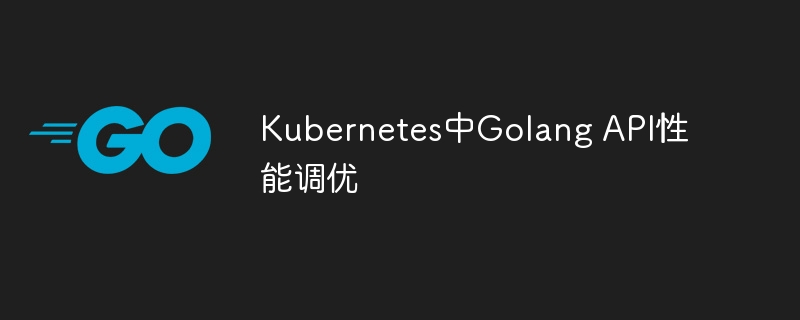Home >Backend Development >Golang >Golang API performance tuning in Kubernetes
Golang API performance tuning in Kubernetes
- WBOYWBOYWBOYWBOYWBOYWBOYWBOYWBOYWBOYWBOYWBOYWBOYWBOriginal
- 2024-05-07 16:15:011229browse
Kubernetes API performance tuning can be optimized by reducing the number of concurrent requests and reducing API load. Use batch operations to increase throughput. Compress request payload to improve response speed. Scale API deployment horizontally, adding processing instances. Optimize pods resource limits to ensure sufficient resources. Use a service mesh to provide load balancing and traffic control.

Go API performance tuning in Kubernetes
The Kubernetes API is built using the Go language, which is known for being fast and performant. However, API performance may be affected when handling a large number of requests or complex operations. This article will describe various methods to optimize the performance of the Kubernetes API and improve its responsiveness and throughput.
Optimize requests
- Reduce the number of concurrent requests: Processing too many requests at the same time will cause the server to be overwhelmed. By reducing the number of concurrent requests, you can reduce the load on your API.
- Use batch operations: For situations where multiple operations need to be performed, batch operations are more efficient than a single operation. It reduces the number of API calls and increases overall throughput.
- Use payload compression: When the request payload is large, compressing it can reduce the transmission time, thus improving the request response speed.
Adjust server configuration
- Increase the number of server instances:Horizontal scaling of Kubernetes API deployment can increase the number of requests processed number of instances, thereby increasing throughput.
- Optimize resource limits for pods: Setting appropriate resource limits (such as CPU and memory) for API pods can ensure that they have sufficient resources to handle requests.
- Using a service mesh: A service mesh can provide additional performance optimizations between APIs and other components, such as load balancing and flow control.
Practical Example
Let’s consider an example of deploying a high-traffic Kubernetes API in a production environment.
The following are some configuration changes to optimize API performance:
# api-deployment.yaml
apiVersion: apps/v1
kind: Deployment
metadata:
name: api-deployment
...
spec:
replicas: 10 # 增加服务器实例数量
...
template:
spec:
containers:
- name: api
resources:
limits:
cpu: "1000m" # 设置 CPU 限制
memory: "2Gi" # 设置内存限制
...Using the Golang client library also allows for the following optimizations:
import (
"context"
"time"
corev1 "k8s.io/api/core/v1"
metav1 "k8s.io/apimachinery/pkg/apis/meta/v1"
"k8s.io/apimachinery/pkg/util/json"
)
func main() {
// 使用 Batch 客户端批量获取 Pod
ctx := context.Background()
client, err := k8s.NewForConfig(cfg)
if err != nil {
panic(err)
}
pods, err := client.CoreV1().Pods("default").List(ctx, metav1.ListOptions{})
if err != nil {
panic(err)
}
// 压缩响应数据
data, err := json.Marshal(pods)
if err != nil {
panic(err)
}
compressed := gzip.Compress(data)
}By implementing these optimizations, the Kubernetes API Performance has been significantly improved, able to handle higher loads and provide better response times.
The above is the detailed content of Golang API performance tuning in Kubernetes. For more information, please follow other related articles on the PHP Chinese website!

